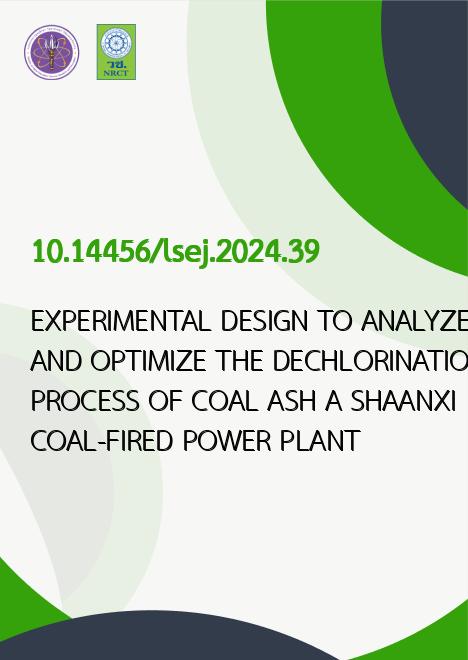
|
EXPERIMENTAL DESIGN TO ANALYZE AND OPTIMIZE THE DECHLORINATION PROCESS OF COAL ASH A SHAANXI COAL-FIRED POWER PLANT |
|---|---|
| รหัสดีโอไอ | |
| Creator | Noppadol Amdee |
| Title | EXPERIMENTAL DESIGN TO ANALYZE AND OPTIMIZE THE DECHLORINATION PROCESS OF COAL ASH A SHAANXI COAL-FIRED POWER PLANT |
| Contributor | Bo Liang, Choat Inthawongse, Guang Sheng Xu |
| Publisher | Pibulsongkram Rajabhat University |
| Publication Year | 2567 |
| Journal Title | Life Sciences and Environment Journal |
| Journal Vol. | 25 |
| Journal No. | 2 |
| Page no. | 519-533 |
| Keyword | coal-fired power plant, waste residual, chlorine, calcination |
| URL Website | https://ph01.tci-thaijo.org/index.php/psru/index |
| Website title | Life Sciences and Environment Journal |
| ISSN | 2773-9201 |
| Abstract | Coal is the main structure of China's energy resources. At the same time, coal power generation is the main power supply base in China. Coal contains chlorides, which harm the environment, while building materials are discharged or reused. Therefore, it is necessary to remove chlorine from the waste residue of coal-fired power plants. Moreover, conventional chemical testing methods are limited to detecting representative points and need to provide information about other points. However, results can be obtained for all operational parameters by employing a full factorial design analysis through Design of Experiments (DOE). In this study, a full factorial design of the experimental methods is used to detect the chlorine in the coal-fired coal ash of Shaanxi's coal-fired power plant. The chlorine in the coal-fired power plant ash is removed by calcination. The influence of calcination time and calcination temperature on the chlorine removal rate is studied to find the best method to remove chlorine in industrial production. The results show that calcination has the effect of removing chloride content in the slag of coal-fired power plants, and the two variables of calcination time and calcination temperature are directly proportional to the dechlorination rate. High temperature and long time can increase the removal rate of chloride in the slag of coal-fired power plants. According to the removal effect, the best process can be obtained: calcination temperature is 1400°C, calcination time is 2 hours, the removal rate of chlorine is 99.51%, and the residual chloride in the sample is removed. At the same time, achieve full parameter range operation and optimize the dechlorination process accordingly. |